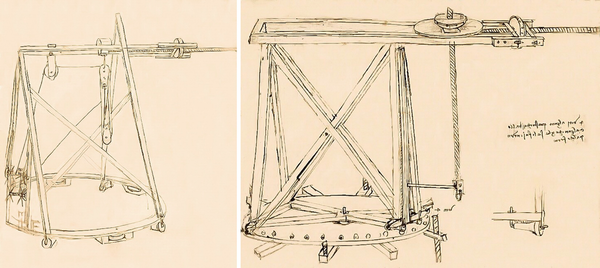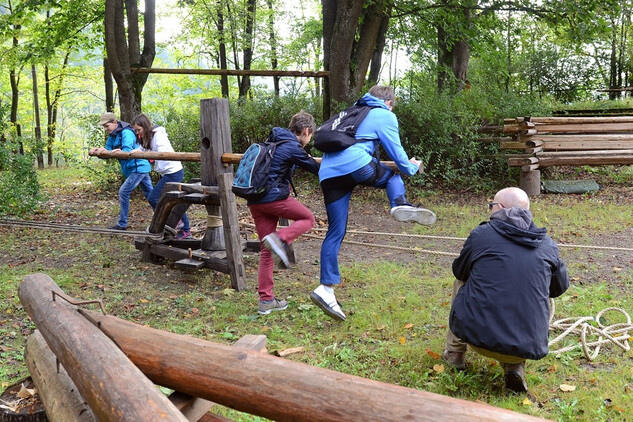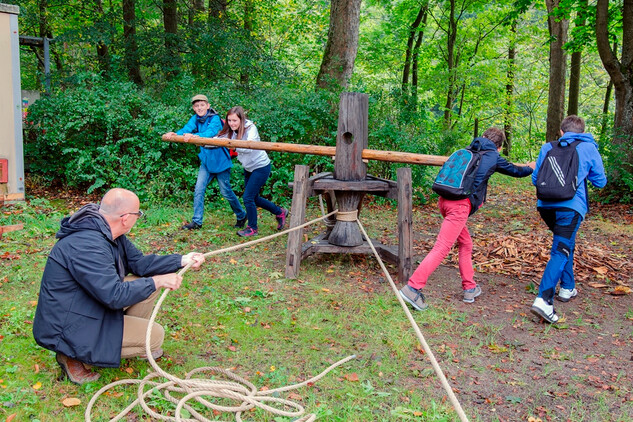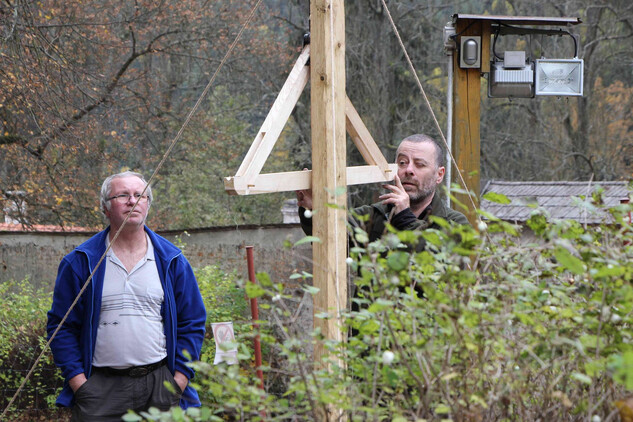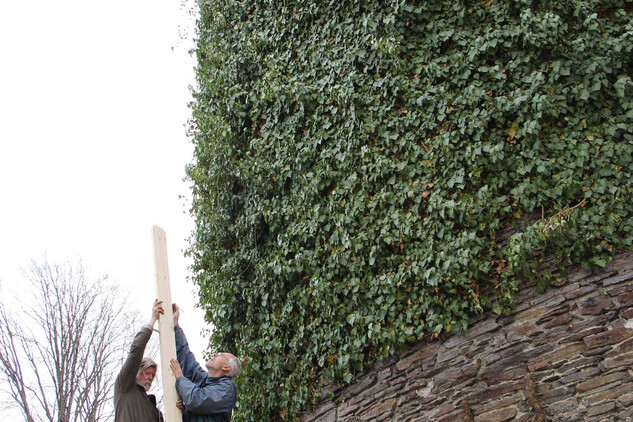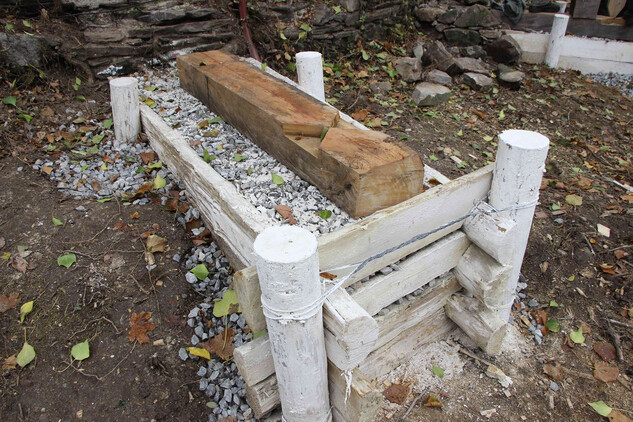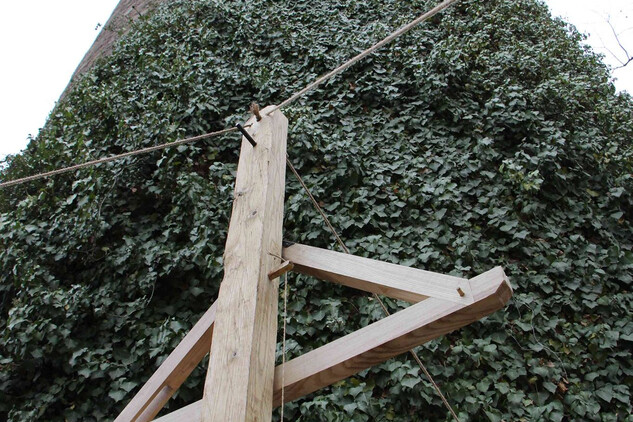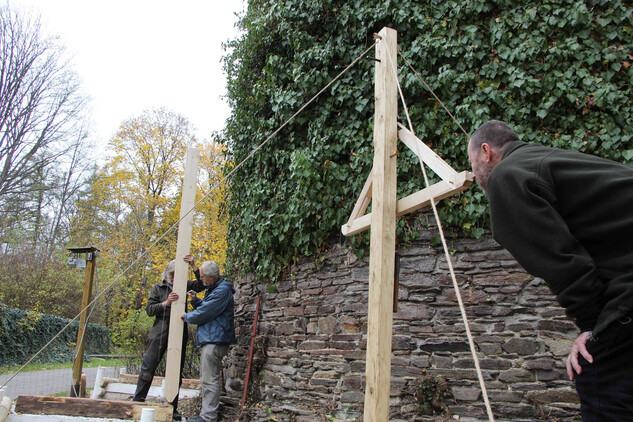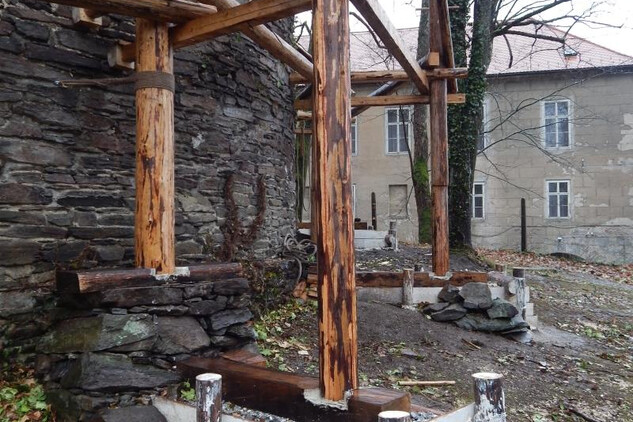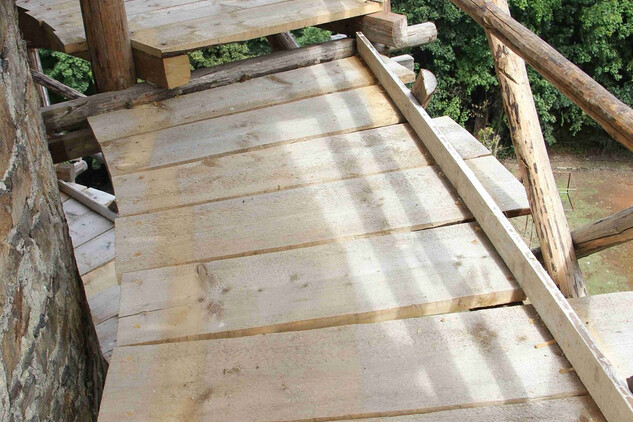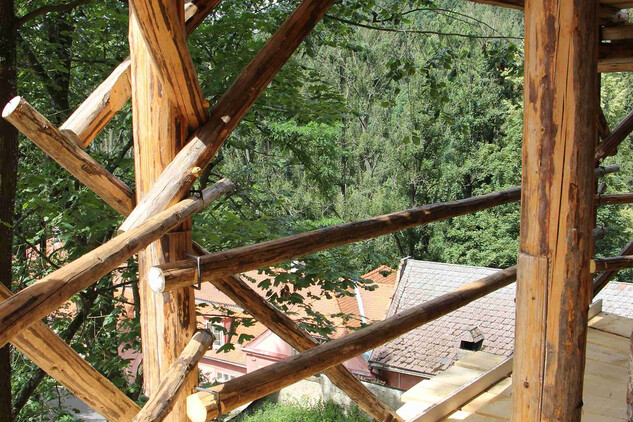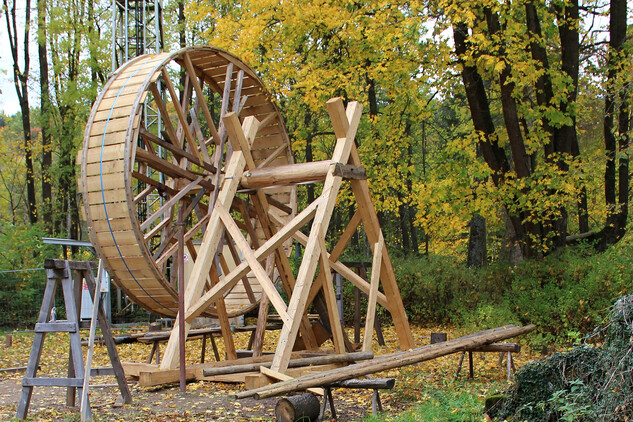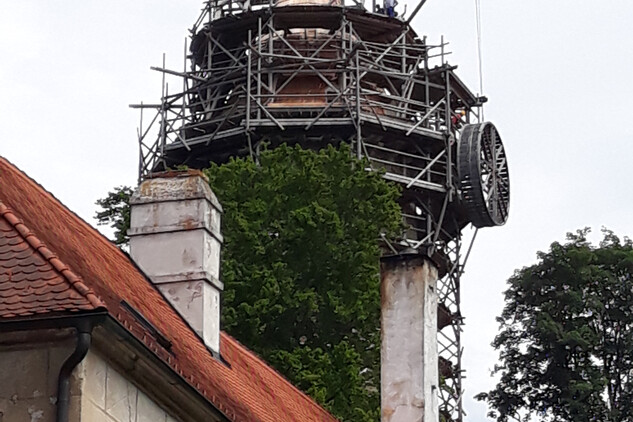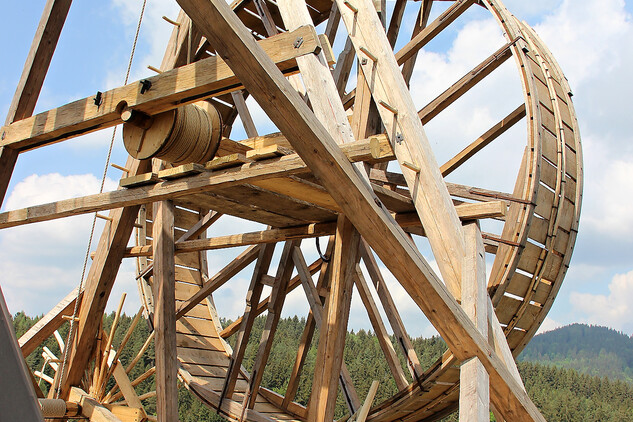Restoration 2013 – 2020
The building project was preceded by a detailed architectural and historical survey. The work began with the manual felling and trimming of trees from the local forest. This was followed by the construction of wooden scaffolding based on drawings in medieval manuscripts. The tower was repaired using a functional replica of a historical crane, inspired mainly by sketches by Leonardo da Vinci. In 1472, Leonardo worked as a young apprentice in the workshop of Andrea del Verrocchio, whose task was to cast and install a two-tonne gilded orb on top of the Cathedral of Santa Maria del Fiore in Florence. The raising and installation of the orb was done by use of a rotating crane, which the then nineteen-year-old Leonardo sketched in his notebook. The same crane was drawn a few years later by another Florentine artist, Bonaccorso Ghiberti. This type of rotating crane was almost ideal for repairing Jakobínka, because the diameter of the tower at Rožmberk is almost identical to that the of the circular floor plan of the lantern on the cathedral dome in Florence (10 m), and both structures are topped by a conical roof. In addition to the architectural similarity of the two buildings, the use of this type of crane at Rožmberk was also historically justified, because it is likely that around the year 1500 similar construction machines were used elsewhere in Central Europe and when it was necessary to repair damage to Jakobínka after a fire in 1522 a similar type of rotating crane may well have been used.
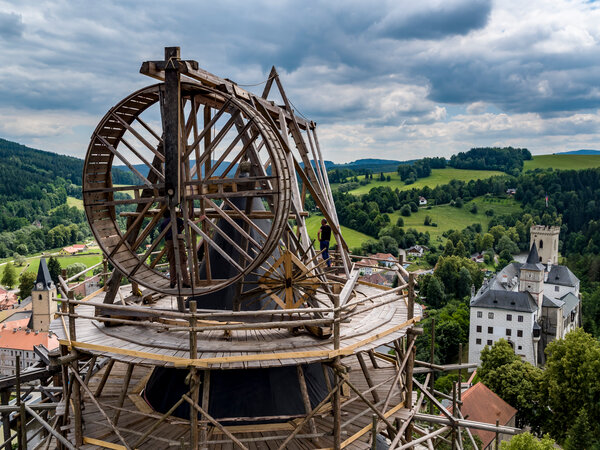
From the beginning, the project also served as an extremely impressive tool and aid in so-called living history. Czech and foreign carpentry apprentices worked on the construction site, and excursions of experts, guided tours for the public, and educational programmes for children took place there.

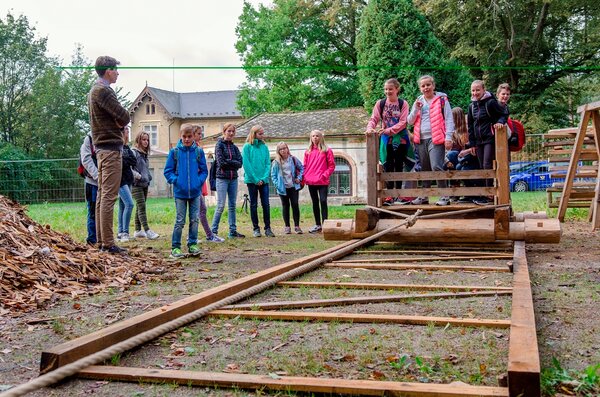
In the summer of 2019, Jakobínka, along with the wooden scaffolding and historical crane, served as an extremely attractive setting for the shooting of a film about the famous regent of Rožmberk, Jakub Krčín of Jelčany. It represented the tower of Česky Krumlov Castle during its Renaissance reconstruction.
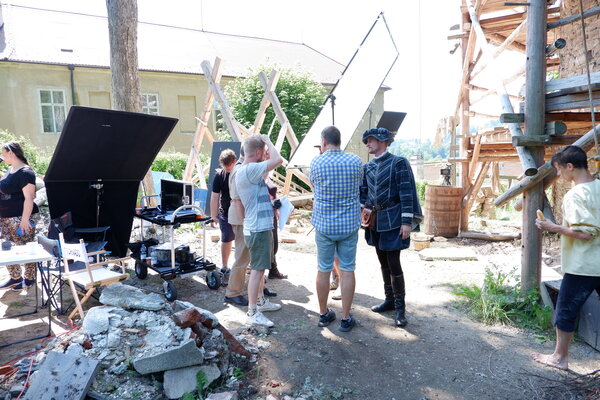
Important facts about the replica of the rotating crane
- The replica of the crane is located on the top of the Jakobínka tower at a height of about 35 metres. It is 14 metres long and 7 metres high with a wheel for human drive and this can rotate around its axis. Thanks to this, it can reach the entire surface of the tower to the top.
- The crane was made by three carpenters. The selection and preparation of timber took a month, and it took 6 months to produce and 3 weeks to assemble. It cost 2.3 million CZK.
- The timber used comes from local forests. Mainly this is spruce timber; only selected parts are from oak wood. The structure was chiselled manually using axes of various types and without using any electric tools. Smaller cylindrical parts were lathed (manually powered lathes were known in the middle ages). Iron clamps used as fasteners were forged by a forger.
- The timber was preserved by curd and, as well as other lubricants, lard is used for lubrication.
- The crane’s weight is about 3.8 tons and approximately 9.5 cubic meters of timber was used.
- The crane is a two-speed crane with gears placed directly on the main shaft in the form of a sliding drum and shifting can be done when the rope is unrolled.
- The machine is designed to safely lift a load of up to 500 kg when a man with the minimum weight of 70 kg walks in its wheel.
- One lift of the load takes an average of 7 minutes.
- The construction of the crane started at the site of the Jakobínka tower in autumn 2017; the unfinished structure was left over the winter and in spring 2018 the machine was completed and commissioned.
- The lifting equipment is operated by three workers: the first one walks (in this way he/she controls the running wheel), the second assists in the control of the running wheel and the third (who is the lifting group lead) helps with the horizontal rotation of the hoist and checks the motion of the load and gives instructions for the start and interruption of lifting, etc.
- Two permanent temporary workers (a girl and a man) and occasionally 12 volunteers take turns to walk inside the wheel and power the crane.
- The crane is placed on the tower top. It has arranged the transport of approximately 15 tons of material to the top so far and there are still about 10 tons left.
- The creator of the crane is carpentry master, Mr. Petr Růžička, who cooperated with Ing. Vít Mlázovský and Ing. Filip Chmel who are experts in statics. The computational model for computer verification of dimensions was carried out by Associate Professor Fajman from the Czech Technical University in Prague.

Explore the top of the Jakobínka tower.
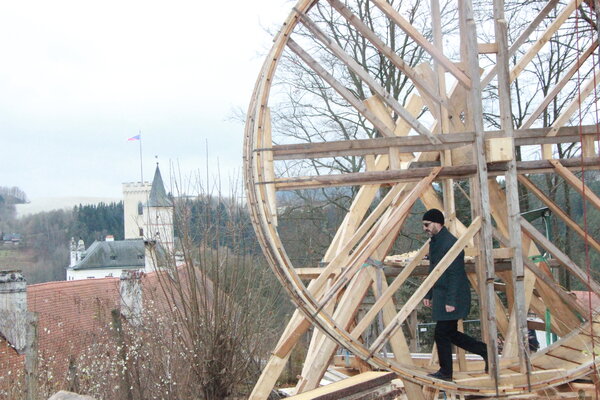
Quick contact
Are you lost? Don't worry, give us a call and we will help you.
